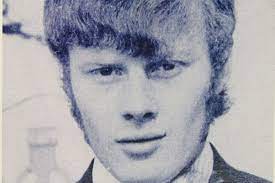The inquest into the death of Hugh Gerard Coney continue in Newry Courthouse this week, with the evidence of former military personnel and a pathologist expert being heard by Coroner Anne-Louise Toal and a jury.
All of the military witnesses, who were either Royal Hussars or dog handlers attached to the British Army Dog Unit, have been granted anonymity and screening for the purposes of this inquest, meaning that their names have been cyphered and their identities fully hidden from the public. Some witnesses have given evidence remotely, and others’ statements have been read out under Rule 17 and adopted into evidence. The former British soldier who opened fire on the escapees, killing Coney and injuring Shannon, known to this inquest as HCM1, is one of the latter ones. He cannot be compelled to give evidence as he lives abroad and has failed to engage with the inquest.
There is only one statement believed to be HCM1’s – one that was recorded in 1974 – deemed “unofficial”. In it, HCM1 said that he shouted two warnings, but there was no reaction, so he allegedly fired a shot “in the air”. HCM1’s statement then read that he caught a glimpse of something shiny, which he thought might have been a gun, and that he fired another shot after having given another warning. No weapon was recovered from the spot where Coney lost his life, nor from the escapees who were beside him. RFJ is aware that labelling victims as potential gunmen in order to somehow justify their deaths was a common practice of the British Army during the conflict – the Bloody Sunday and Ballymurphy massacres are two of the many examples of that practice.
Although HCM1 was the only soldier who opened fire on the night of the incident, killing Coney, he did not give evidence in the original inquest held in 1975, and neither will he be compelled to give evidence in this one. Hence, he cannot be questioned about his original statement or recollection of what happened the night Coney lost his life.
The rest of the evidence from former military personnel backed HCM1’s account regarding the warnings given, in stark contrast with the evidence from former internees. Still, no one apart from HCM1 said they had seen anything shiny that could have been mistaken for a gun. One of the military witnesses, HCM23, said he doesn’t even remember any dogs or dog handlers being present during the incident, even though several dog handlers attached to the British Army who were at the scene have given evidence in this inquest.
The Coroner’s Office has recently received a statement from a former soldier in the Royal Hussars known as HCM25, who attended the inquest this week and contradicted several of his former colleagues. He also contradicted the original statement the RUC recorded under his name – he was certain that this statement was, in fact, not his.
As is common in inquests touching upon deaths caused by the British Army, part of the evidence from former military witnesses focused on what is known as the Yellow Card, a set of rules by which British soldiers were allowed to use a firearm – the Rules of Engagement. In other words, the Yellow Card would assist in deciding whether the use of a firearm and, therefore, lethal force was lawful or not in specific circumstances. According to the card, one of the situations in which a soldier could open fire was if, after having given a warning with clear orders, an individual was “carrying what you can positively identify as a firearm, but only if you have reason to think that he is about to use it for offensive purposes.” The Yellow Card also stated that a firearm should only be used as a last resort. The allegation of having given a warning as well as the perception of a real threat, such as the mention of the “shiny object” by HCM1, is a deceptive device that RFJ have come across in many cases in which British soldiers have shot and killed unarmed civilians. This misleading narrative was often used by soldiers after a fatal shooting to depict a Yellow Card-compliant account and, therefore, to escape any responsibility. It was a way of attempting to justify the use of unreasonable force – effectively murder – and circumvent the Rules of Engagement.
Remarkably, all the military witnesses who have given evidence in the inquest to date have denied having exerted or witnessed any form of violence against any of the escapees during the night in question and could not explain the allegations of brutality the court has heard nor why 29 of the escapees had to be brought to hospital after the ordeal.
The inquest continues next week in Newry Courthouse, with further evidence expected from former military witnesses, prison wardens, and retired police officers.











